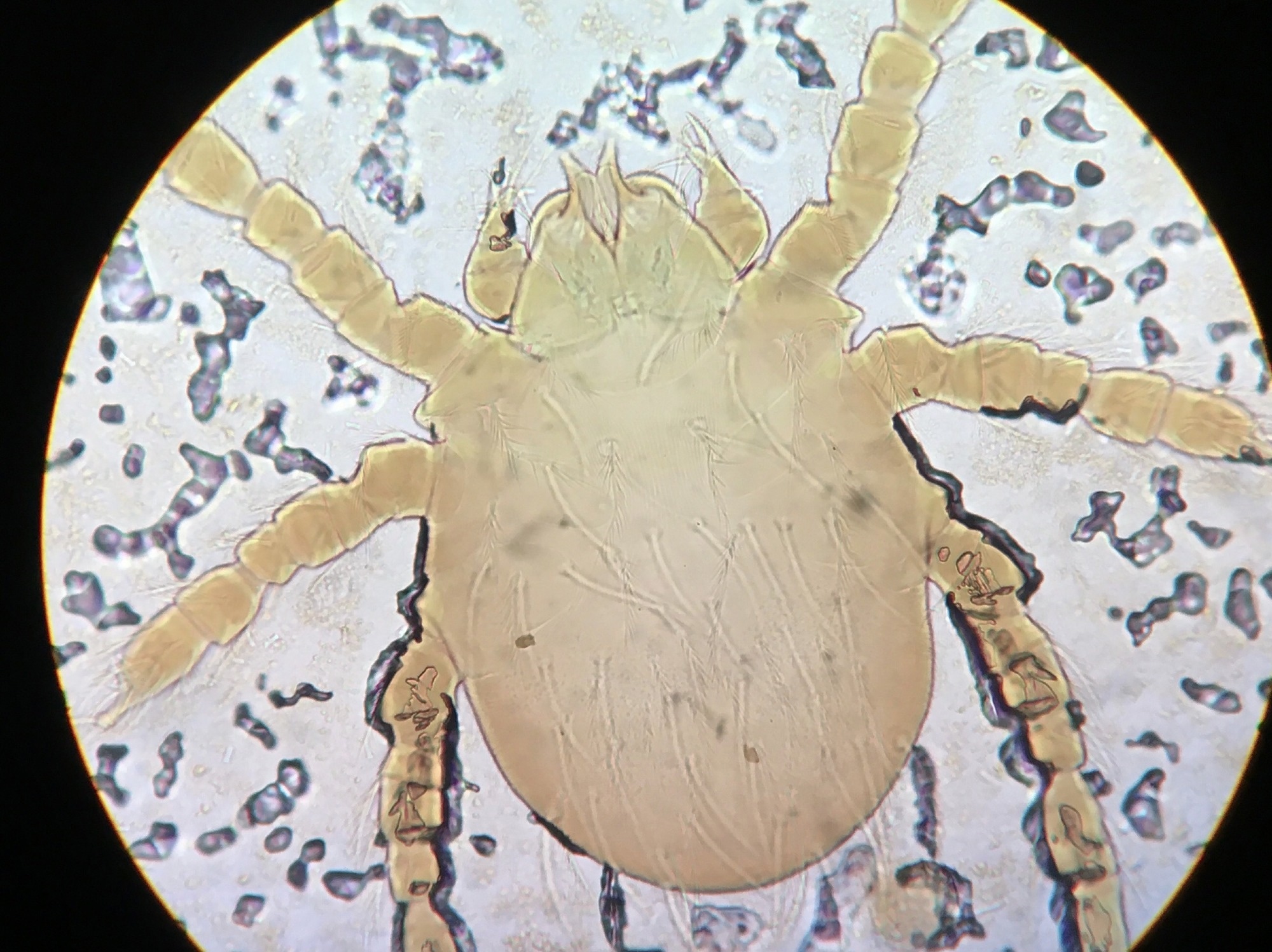Scientists have developed an animal model of scrub typhus using outbred CD-1 mice. Using the model, they have characterized host susceptibility to the causative pathogen, disease pathogenesis, and immune responses. The study has been published in the journal PLOS Neglected Tropical Diseases.
 Study: Host transcriptomic profiling of CD-1 outbred mice with severe clinical outcomes following infection with Orientia tsutsugamushi. Image Credit: Anestial / Shutterstock
Study: Host transcriptomic profiling of CD-1 outbred mice with severe clinical outcomes following infection with Orientia tsutsugamushi. Image Credit: Anestial / Shutterstock
Background
Scrub typhus is a vector-borne disease caused by an obligate intracellular Gram-negative bacterium, Orientia tsutsugamushi. The bacterium typically replicates in the cytosol of endothelial cells and phagocytes and is transmitted by mites.
Scrub typhus is highly prevalent in Southeast Asia's 'Tsutsugamushi triangle.' However, some cases have recently been detected in other geographical locations, including India, Nepal, Micronesia, Maldives, South America, the Middle East, and Africa.
The infection is primarily self-limiting with minor symptoms, including skin lesions, fever, and other flu-like symptoms. However, in severe cases, patients can develop pneumonia, liver inflammation, and meningoencephalitis, which may result in severe tissue damage, multiorgan failure, and even death.
Despite these severities, Orientia tsutsugamushi infection remains neglected worldwide, with no vaccines and appropriate diagnostics available.
In the current study, scientists have developed an outbred mouse model of Orientia tsutsugamushi infection using CD-1 mice.
Previous studies investigating Orientia tsutsugamushi infection have used inbred mouse models. However, these models are not suitable for studying the impact of genetic diversity on the clinical course of Orientia tsutsugamushi infection.
Susceptibility of outbred mice to Orientia tsutsugamushi infection
The study compared Orientia tsutsugamushi infection susceptibility of inbred (B6) and outbred (CD-1) mice. Both mouse models established infection by administering Orientia tsutsugamushi via intravenous injection.
The findings revealed that Orientia tsutsugamushi infection is 90-100% lethal in outbred mice compared to inbred mice (0-10%). In addition, the outbred mice had higher bacterial burdens than inbred mice in many organs, including the lungs, spleen, kidney, and liver. Overall, these observations indicate that outbred mice are more susceptible to Orientia tsutsugamushi infection and that they develop a systemic infection.
Pathological changes in Orientia tsutsugamushi infection
Genetics & Genomics eBook

The outbred mice infected with Orientia tsutsugamushi developed pulmonary edema, interstitial pneumonia, perivascular lymphocytic infiltrates, and vasculitis, which are the primary pathological features of severe Orientia tsutsugamushi infection observed in humans.
The binding of angiopoietin 1 (Ang1) to its cell surface receptor Tie2 is required for maintaining vascular barrier integrity. During infection, this integrity is disrupted by Ang2, which binds to the Tie2 receptor to block the physiological Ang1 – Tie2 axis.
In outbred mice, Orientia tsutsugamushi infection induced the expression of Ang2 and reduced the expression of Ang1 and Tie2. These observations indicate endothelial disruption and loss of vascular barrier integrity.
Immune response to Orientia tsutsugamushi infection
The lung immune response to Orientia tsutsugamushi infection was assessed in the study by performing a differential analysis of 562 immunology-related genes in lung tissues.
The findings revealed type 1 T helper cell/CD8-skewed response to Orientia tsutsugamushi infection in outbred mice. In addition, significantly increased expressions of various proinflammatory mediators and cytotoxicity-related genes were observed in outbred mice.
Significantly increased endothelial activation markers and receptor expressions were observed in infected outbred mice lung tissues. Cellular stress markers and cytotoxicity-related markers were upregulated in outbred mice, with macrophage scavengers and C-type lectin receptors showing a highly upregulated expression.
Overall, these observations indicate that macrophage-inducible C-type lectin (Mincle), an innate immune receptor, plays a vital role in sensing Orientia tsutsugamushi infection and stimulating type 1 cytokines and chemokines.
Significantly elevated levels of many cytokines and chemokines were observed in serum samples collected from infected outbred mice, which correlated with immune cell recruitment during infection progression. The magnitude of serum inflammatory response was much lower in inbred mice.
Overall, these observations indicate that outbred mice exhibit robust inflammatory responses for immune cell recruitment during the progression to severe infection.
Study significance
The study identifies outbred mice CD-1 as a potent preclinical model of scrub typhus. The mice are highly susceptible to Orientia tsutsugamushi infection and mimic severe pathological features of Orientia tsutsugamushi-infected humans.
As mentioned by the scientists, CD-1 mice could serve as a potential mouse model to study Orientia tsutsugamushi infection pathogenesis and related immune dysregulation. In addition, this preclinical model could be beneficial for translational and vaccine development studies.
- Thiriot J. 2022. Host transcriptomic profiling of CD-1 outbred mice with severe clinical outcomes following infection with Orientia tsutsugamushi. PLOS Neglected Tropical Diseases. https://journals.plos.org/plosntds/article?id=10.1371/journal.pntd.0010459
Posted in: Medical Science News | Medical Research News | Disease/Infection News
Tags: Animal Model, Cell, Chemokines, Cytokines, Cytotoxicity, Diagnostics, Edema, Fever, Flu, Genes, Genetic, Immune Response, Immunology, Inflammation, Intracellular, Kidney, Liver, Lungs, Macrophage, Mites, Mouse Model, Pathogen, Phagocytes, Pneumonia, Preclinical, Pulmonary Edema, Receptor, Skin, Spleen, Stress, Vaccine, Vascular, Vasculitis

Written by
Dr. Sanchari Sinha Dutta
Dr. Sanchari Sinha Dutta is a science communicator who believes in spreading the power of science in every corner of the world. She has a Bachelor of Science (B.Sc.) degree and a Master's of Science (M.Sc.) in biology and human physiology. Following her Master's degree, Sanchari went on to study a Ph.D. in human physiology. She has authored more than 10 original research articles, all of which have been published in world renowned international journals.
Source: Read Full Article
